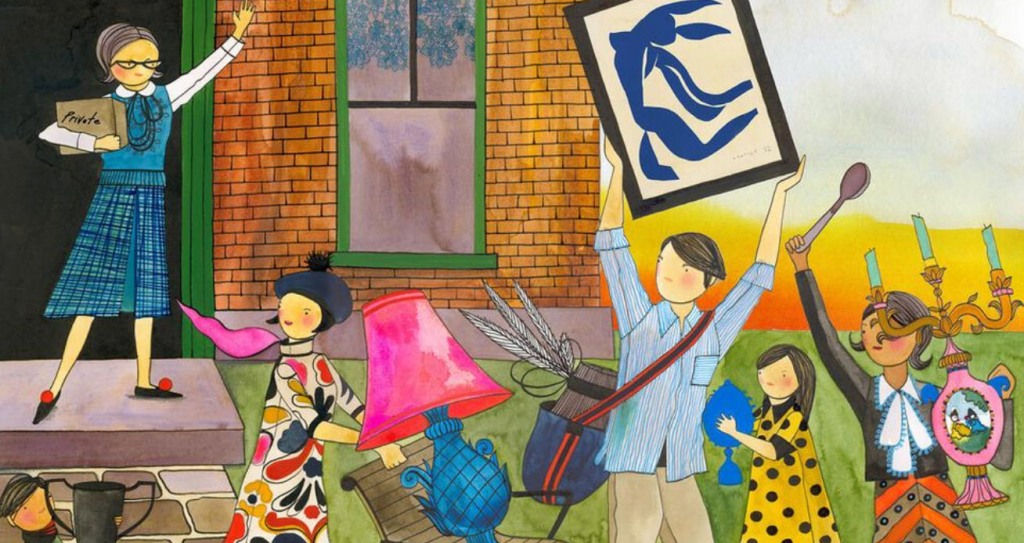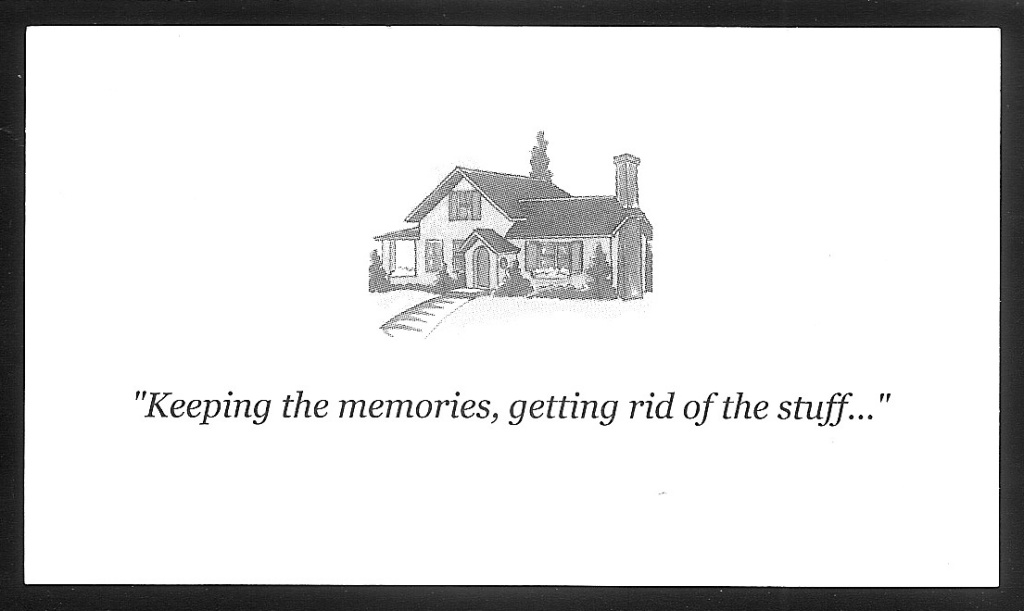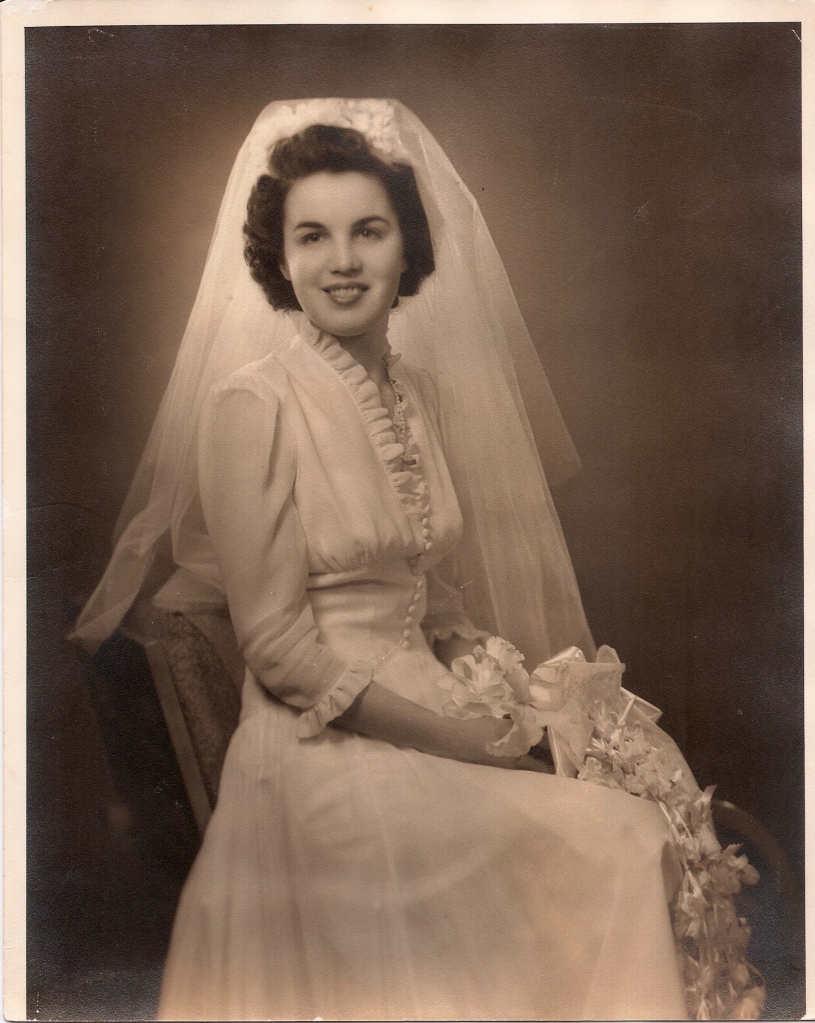
I am a lifelong diarist: and the trunk you see here is filled with my diaries, going back to 1962 (when I was nine years old) to 1994, when I was 41. They were in storage for a long time, but they are back with me now and I am thus faced with the responsibility of contemplating what to do with them.
Since I am a writer of memoirs, I will surely be referring to these diaries as I work on my next books. But what will happen to them after that?
I actually contemplated–with dread–destroying them after I had determined that I would have no more use for them. I asked myself if my children would really want the burden of figuring out what to do with them after I’m gone.
On the other hand, as a writer with the soul of an archivist, I really don’t believe in destroying material of this kind. Both as a memoirist who is not a famous person, and as a writing coach, I believe that everyone’s story is important. And I believe that the kind of daily detail that “ordinary” people record in their diaries is an important kind of historical documentation.
Furthermore, once I had opened a couple of my diaries and read bits of them, I realized that a) the writing is good! and b) parts or them could definitely be of interest to future historians, readers, and writers of various kinds. I carried my journal with me everywhere and recorded details about the passing parade of New Yorkers as I rode the subway, sat on benches in Central Park, walked home from the subway in Ft. Greene, Brooklyn, attended the largest nuclear disarmament rally in New York City history. I captured things that often no one else saw, and most likely no one else recorded; and these little vignettes of daily life in New York in the 1980s and 90s are interesting. They just are.
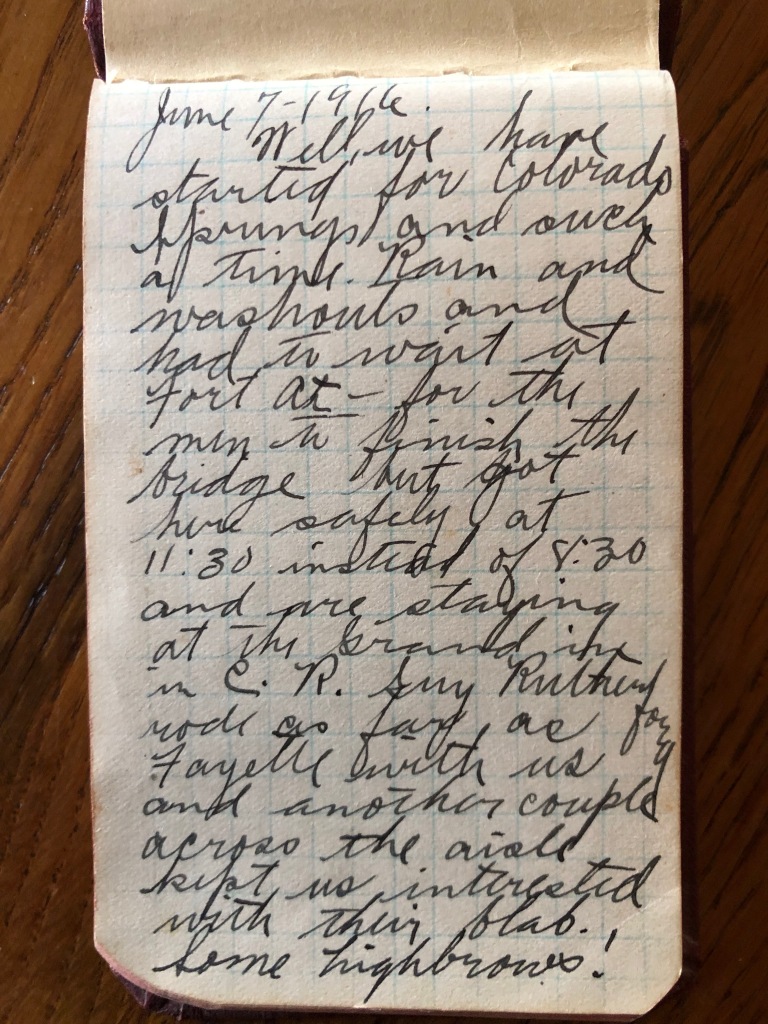
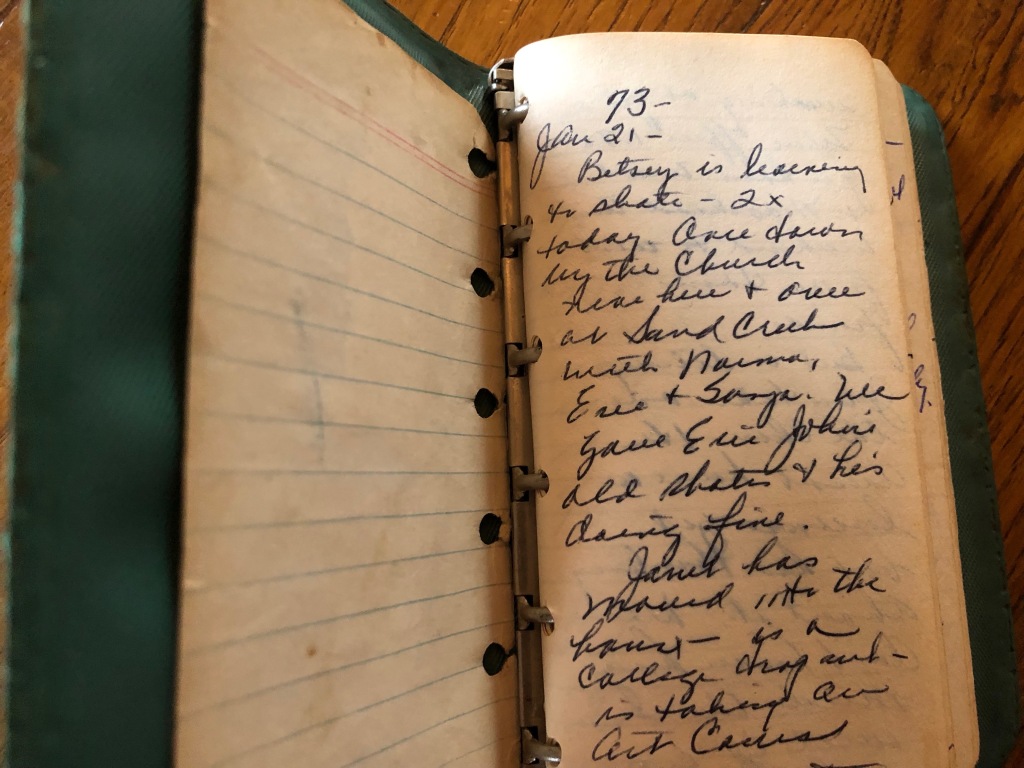

My mother and grandmother also kept diaries all their lives, and I have them. I drew on them heavily when I was working on my memoir, A Long Way from Iowa.
So–now it was back to the question of what to do with all these diaries. “Surely there must be somewhere where this kind of thing can be saved, can be archived,” I said to myself. “There has to be!”
So I did a Google search and guess what? I discovered that there was no such place (at least no such national place) until 2022. But now there is, thanks to Kate Zirkle, founder and executive director of The American Diary Project, and her amazing group of volunteers, who are stepping up and providing a place for Americans to donate their diaries–and a place for this valuable kind of local/family/national history to be preserved, archived, and shared.
I asked Kate if she would be willing to be interviewed via email, and she graciously agreed. Here follows our e-interview.
Janet Hulstrand: How did you come up with the idea for the American Diary Project? And more importantly, how have you managed to make it a reality?
Kate Zirkle: One crisp fall day in October of 2022, I was updating my last will and testament when I was struck by the question of what to do with my journals after I passed. Should I leave them to someone? Should I burn them? Should I donate them? These questions lead me down a fruitless internet search—I just couldn’t find a suitable place to archive my writings in the US. Upon this discovery, I felt an instant, electric surge of “I WOULD LOVE TO DO THAT” and thus, the American Diary Project was born.
My professional background is in marketing, so thankfully I had the experience necessary to create a website and social media presence. It started out with just me, but since opening it up to volunteers we now have over 30 volunteers across the country that help search through diaries to capture metadata, transcribe diaries, write blog posts, and help spread the word about the project. It was also self-funded to start but now we’re officially a 501(c)(3) charitable nonprofit organization, meaning that donations made to us are tax deductible.
“There’s no such thing as a diary that is too mundane, too personal, or too trivial to us.” Kate Zirkle, Founder of the American Diary Project
Janet: Can you give our readers an idea of the kinds of diaries you are getting? What is the oldest one? What is the most recent? Are there any kinds of diaries you cannot accept?
Kate: In order to get our collection started, I initially took to Ebay, Facebook Marketplace, and local estate sales to procure diaries. Now that we’re established, we no longer purchase diaries—instead, diaries and journals are donated to our collection to preserve. As of March 2024, our oldest diary is from 1859 and our most recent diary is from 2022. Most items in the collection are physical diaries and journals, although we do have a handful of digital copies of diaries so that the owners may retain the physical copies. We also have two large volumes of World War II letters from 1942 to 1945, written by a soldier, Harry, to his sweetheart, Bridget, back home.
Janet: Is there any particular advice you have for people who are contemplating sending their diaries to you?
Kate: I usually tell folks that they have two options for their personal diaries:
- Donate what you currently have now to ensure those are added to the collection no matter what.
- Wait to donate all journals at once.
Either way, folks will want to add a section to their will that outlines their wishes for all journals to be sent to the American Diary Project and then list out this website link: Americandiaryproject.com/donate-diary. This should ensure that the executor of their will can find the most up-to-date donation information even if we move the collection intake location, which we will in the near future. If folks need help creating a will, this is a good resource: Doyourownwill.com
I’d also like to reiterate that the American Diary Project is the diary archive for everyday folks. There’s no such thing as a diary that is too mundane, too personal, or too trivial to us.
“Every story, every experience, every life is worth preserving. Please consider donating your diaries rather than destroying them.” Kate Zirkle
Janet: Can you explain what happens when a diary arrives at your office? What are the steps that take it through to being digitized and/or archived?
Kate: First and foremost, we do a happy dance—we’re so excited to receive new contributions to the collection! We then unpack and inspect each diary, applying light cleaning if necessary. Then we document the diary in our online database before placing it into archival storage for preservation. We note important characteristics like the year it was written, where it was written, what it looks like, and any additional information we might have about the author.
As time permits, and even by request of our followers, we also digitize our diaries. We carefully photograph each page of the diary and upload that onto our website. A wonderful volunteer takes it from there, reading through the diary to capture metadata topics and transcribe the diary. We now have many diaries available for the public to read on our website.
Janet: Are the archives open to the public? Is there (or will there be) a catalogue?
Kate: Our collection is currently only open to the public digitally on our website. Our long-term goal is to open a physical library for in-person viewing and research.
Janet: What are some of the most interesting entries you’ve received? The most touching? How about the funniest bits you’ve discovered?
Kate: We share interesting bits from diaries on our social media accounts: Instagram, Facebook, and LinkedIn. Three of my favorite diaries are highlighted on our blog:
- Daughter shares what it was like finding her late mother’s diary
Claire reached out to the American Diary Project to donate her late mother’s diary to the collection. Her mother’s 1980s diary is unique, entertaining, and, at times, heartbreaking. In essence, it is exquisitely human and we are honored to help preserve it. We are immensely grateful to Claire for sharing not only her mother’s diary but her own journey with loss and grief as well. - Addicted to mischief: The poetic writing of Adelaide Irvine Richter
This was the very first piece to enter the collection. It ended up being closer to an amateur memoir than a diary but it has such a special story that goes along with it. After we posted a blog about the piece, Adelaide’s nephew, Douglas (Doug) Irvine Richter, got in touch with us to share more information about his amazing aunt Addie. He also said, “God bless you and thank you for sharing the info. Until now I did not know where she was buried. She passed suddenly and I had no one to contact to find out. I always contacted her caregivers through Addie’s email account that went dead when she passed.” It gives me goosebumps to know that we helped Addie’s family find her! - How reading a stranger’s diary taught me more than a self-help seminar ever could
This journal is extra special since it came to the American Diary Project from a man who is still among the living, as of December 2022. We keep his identity concealed as much as possible in order to protect his privacy. His diary is filled with ample motivational and self-help material and is a joy to read. The author is still in touch with us to this day.
Janet: What kind of donations do you accept? Hard copy? Digital only? Is it possible to submit hard copy and then be able to access a digital version later?
Kate: For donations, we accept diaries in nearly any medium, including those kept in bound journals, notebooks, and even on loose sheets of paper. If you can get it to us, we’re happy to add it to the collection. While we prefer to receive original documents, we also accept copies or scans of diaries, especially if the donor or the diarist would rather hang on to the original. We also accept digital versions of diaries. If a donor or family member of a diarist in our collection requested that we send a physical diary back to them, we absolutely would after verifying their identity and connection.
Janet: I’m intrigued (and amused) by the description of your volunteers as “an amazingly dedicated and delightfully introverted” group of people. Why introverted?
Kate: I think there’s something special about folks who choose to spend their free time reading quietly and volunteering for the American Diary Project. It is often a solitary pursuit and naturally something that appeals to introverts. Our volunteers are some of the kindest, and at times quietest, people I’ve ever met. There are no egos, no drama—just a like-minded group of people doing their part to preserve American history. Introverts are amazing!
Janet: How does copyright work with donated materials?
Kate: Those who donate diaries to our collection agree to gift the diary/diaries to the American Diary Project to preserve in perpetuity and agree to transfer the copyright of the gifted diary/diaries to the American Diary Project. This is documented via our donation form.
Janet: How can people help you with this project? You’re in Cleveland; I’m wondering both what people living in the Cleveland area can do to help, and also if there are ways to help from a distance.
Kate: There are many ways for folks all across the world to get involved by volunteering for the American Diary Project:
- Write blog posts
- Read diaries to document metadata topics
- Transcribe diaries
- Contribute diaries to the collection
- Spread the word about the project
- Donate archival and business supplies via our Amazon Wish List
Since we’re a 501(c)(3) nonprofit, we also accept monetary donations to help with our operational expenses. We also have a volunteer-based board of directors and will entertain adding new directors if anyone is interested.
Janet: Kate, thank you so much for taking the time to answer these questions–and an even bigger thanks to you, and your team of volunteers, for taking on this very important work. I can’t tell you what a relief it was to me to learn that you are out there, solving this problem for me, and for so many others who care about preserving American history, as seen through the eyes of “ordinary” Americans. I hope that people who discover diaries as they are going through the contents of a home will consider sending their diaries to you!
Janet Hulstrand is an American writer, editor, writing coach, and teacher who lives in France. She is coauthor of Moving On: A Practical Guide to Downsizing the Family Home, and author of Demystifying the French: How to Love Them, and Make Them Love You, and A Long Way From Iowa: From the Heartland to the Heart of France. Kate Zirkle is the founder and executive director of the American Diary Project.
Filed under: interviews with experts, keeping the memories, preservation | Tagged: American Diary Project, American history, archives, diaries, DiariesAreHistory, diary archives, downsizing the family home, historic preservation, journals, Kate Zirkel, letters, local history, saving diaries | Leave a comment »


 This is my Dad’s cousin Howard, who was almost like a brother to him. He was a pilot whose plane went down over the Adriatic Sea during World War II. His body was never found.
This is my Dad’s cousin Howard, who was almost like a brother to him. He was a pilot whose plane went down over the Adriatic Sea during World War II. His body was never found. 